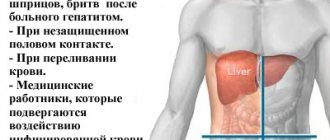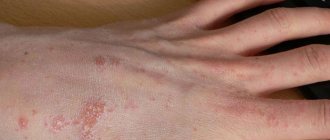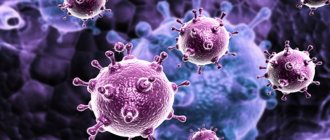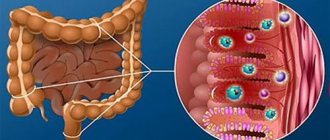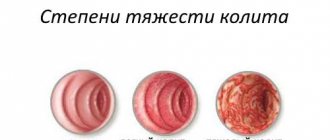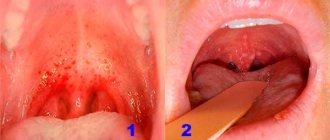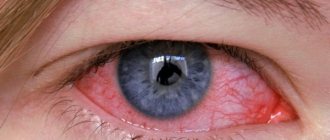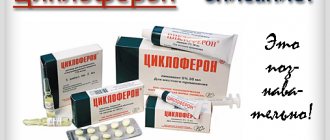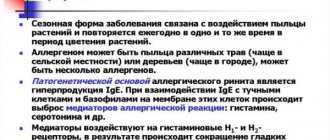Is there a cure for hepatitis C? This is a question whose answer has changed. In the 20th century, the disease was considered an incurable pathology. The pathogen is characterized by mutational activity and resistance to the effects of drugs. But new generation drugs cope with the virus only during the acute period.
The chronic form of hepatitis C cannot be completely cured and is considered incurable. This does not mean that you should refuse drug treatment. Ignoring therapy worsens the prognosis and leads to the development of complications in the form of hepatic coma, oncology, cirrhosis and other diseases.
Is it possible to completely cure hepatitis C, what methods does modern medicine offer, what does the patient’s recovery depend on - we will consider further.
Is it possible to cure chronic hepatitis C completely?
Previously, the “gold standard” for treatment of viral hepatitis C was a combination of long-acting interferon (PEG-IFN-α) and ribavirin. But in 60% of patients this treatment method did not bring the desired result. Therefore, new, more effective and safe antiviral agents are currently being used. They affect the processes of virus replication, but differ in their “points of application.”
Since the registration in 2011 of the first generation HCV viral protease inhibitors, Boceprevir and Telaprevir, their combination with PEG-IFN-α has increased the effectiveness of treatment by 23%. New medications have an even more pronounced antiviral effect, but cause much fewer adverse reactions.
Indications for starting antiviral therapy are:
- determination of HCV RNA in blood;
- increased ALT concentration;
- confirmation of histological activity;
- the presence of fibrotic changes in liver tissue.
But patients are always concerned about the question: is it possible to cure hepatitis C forever? A real breakthrough in the pharmacotherapy of the disease was achieved with the beginning of the use of interferon-free regimens using drugs with direct antiviral action. This not only allowed many patients to be completely cured, but also gave a chance for therapy to patients with contraindications to the use of interferon.
Currently, hepatitis C is treated by taking 1–2 tablets per day for 3 months (instead of 12 according to the old protocols) or 24 for chronic disease. Antiviral drugs can also be taken for concomitant pathologies (HIV, cirrhosis, kidney damage, etc.).
First generation drugs acted only on the first and third genotypes of HCV. Second-generation agents additionally affect HCV genotype 2. The simultaneous use of several medications of this class, which differ in their effect on the replication process, makes it possible to overcome the resistance of the virus and achieve a sustainable response in the shortest possible time.
Modern direct-acting antiviral drugs, including complex ones, are available on the domestic and foreign pharmaceutical markets. Thanks to this, it became possible to solve the problem of how to get rid of hepatitis C forever.
Where does treatment begin and who to contact?
When a disease is detected during a random examination, many patients are faced with the question: what to do and who to contact? First you need to understand that you need to act immediately. When you receive the results, you must immediately visit a competent doctor who will prescribe additional tests, which will determine the final diagnosis. You can get advice and treatment prescriptions from the following specialists:
- Therapist. The first doctor you should contact for any problems in the body. He will conduct a full diagnosis and, based on the collected data, prescribe treatment or refer you to a specialist.
- Infectious disease specialist. Patients turn to him in acute stages of hepatitis. The doctor prescribes a course of treatment for the underlying disease and prescribes rehabilitation therapy after it. The dynamics of the development of the disease must be monitored.
- Hepatologist. His expertise covers chronic forms of liver diseases, including cirrhosis of various etiologies.
These are the main specialists who should be contacted when hepatitis C is detected during routine diagnostics. If symptoms appear (pain in the digestive tract, nausea, appetite disturbances), you can initially contact a gastroenterologist. This will be followed by a standard scheme: identifying the causes through laboratory tests, prescribing treatment or redirecting to a specialized doctor.
If any liver problems are detected, the first action of the attending physician will be to prescribe hepatoprotectors to protect the liver and restore it. Further therapy continues after receiving test results confirming the presence of the disease and determining the genotype of the virus and the intensity of its development.
Is HCV treated for concomitant diseases?
HCV is often combined with various pathologies. Patients at risk (sexually promiscuous, injecting drug users, etc.) may be diagnosed with hepatitis B and HIV. The progression of HCV (especially in latent, asymptomatic cases) is accompanied by irreversible liver damage. Cirrhosis and fibrosis of the liver is an indication for transplantation in every third patient.
Therefore, it is important to start treatment at an early stage to prevent severe damage to hepatocytes. But modern direct-acting antiviral drugs are compatible with basic hepatoprotective therapy. All medications prescribed for hepatitis C are used for cirrhosis, but the duration of treatment may differ significantly.
HCV infection combined with HIV can also be successfully treated. Reviews from experts and clinical trial data confirm the safety of the use of antiviral drugs of various pharmacological groups. But such combination therapy should be carried out under the supervision of a doctor.
Almost all clinical studies have assessed the effectiveness of modern medications in adults. But HCV therapy in children poses a particular problem. Direct antiviral drugs are contraindicated before reaching 12–16 years of age, so the child is prescribed interferons in a dose calculated according to age standards. Concomitant diseases complicate the course of hepatitis C, but complete cure is possible with the correct selection of medications.
Signs of hepatitis
Non-viral liver diseases often develop over years and occur in an asymptomatic, latent form. An acute course is rare; sometimes signs of hepatitis appear already at the stage of serious organ damage. In this case, the patient experiences classic symptoms:
- Pain in the right hypochondrium.
- White feces and dark urine.
- Nausea, loss of appetite.
- Ailments, weakness.
- Sometimes the temperature rises to 38-39°C.
- Jaundice: yellowing of the sclera, less commonly the skin.
Other signs of hepatitis are also characteristic of autoimmune and radiation disease. For example, severe skin itching occurs, joints begin to ache, bleeding may occur (usually from the nose), bruises and bruises appear on the skin.
Can the virus be cured in children?
In one clinical trial, conducted by Russian scientists, 70 children diagnosed with hepatitis C virus were monitored by specialists. The trial was aimed at determining whether HCV could be cured using standard and relatively safe drugs for pediatric use.
Each child was administered interferon α-2a at a dose of 3 million IU subcutaneously three times a week. Hepatoprotectors and other basic therapy were also used. The first group was prescribed IFN for six months, the second - for 12 months. The age median of the subjects was 3–16 years. The duration of the presence of the virus in the body is no more than 8 years.
Quantitative determination of RNA was carried out before the start of therapy, as well as at 3, 6, 9 and 12 months of treatment and 3, 6 and 12 months after its completion. Sustained virological response was achieved in only 25%. At the same time, relapse of the pathology was registered in 70% of children.
The addition of antiviral drugs (Remantadine and Ribavirin) and immunomodulators to interferon significantly increased the effectiveness of therapy. According to doctors and reviews on numerous specialized forums, the answer to the question of whether hepatitis C can be treated in children is positive. But you can get rid of the disease only by thoroughly following the doctor’s recommendations.
Treatment of non-viral hepatitis
Non-viral hepatitis is much less common than viral hepatitis. Therefore, if the doctor suspects liver inflammation, he will first rule out the infectious nature of the disease. To do this, blood tests are performed, and in extreme cases, a liver biopsy.
In case of toxic hepatitis and other reactive types, first of all, the factor provoking the disease is eliminated - alcohol is excluded, medication is suspended, etc. After this, symptomatic treatment is prescribed:
- Adsorbents.
- Hepatoprotectors (it is worth saying that this group of drugs is very popular, but today there are no clinical studies proving their effectiveness).
- B vitamins (B1, B2, B6), as well as vitamins A, C, D.
- Choleretic agents.
- Enzymes.
To treat and prevent hepatitis in the future, a person should follow a strict diet (5th table according to Pevzner). Without this condition, therapy for non-viral inflammation is ineffective. Fatty meats, fatty fish, yellow cheeses, chocolate, custards, smoked meats, semi-finished products, and preserves are excluded from the patient’s diet.
For autoimmune hepatitis, the doctor may additionally prescribe glucocorticosteroids, in particular prednisone. In this case, treatment is carried out not by a hepatologist, but by a rheumatologist.
Does a favorable prognosis depend on the genotype of the virus?
To date, 6 HCV genotypes and more than 100 subtypes have been identified. Additionally, quasispecies are identified that arise against the background of long-term persistence in the human body (up to several million). This explains the resistance of the virus to the action of antibodies produced in response to the penetration of the pathogen.
The most common subtypes are 1a, 1b, 2a, 2b, 3a. Mostly these HCV genotypes are found in patients permanently residing in Europe, North America, and Asia. Thus, 1b is diagnosed in 50–90% of cases, 1a – in 40% of patients. Subtypes 2a and 2b are much less common and are usually found in Asia. The third genotype is diagnosed in Thailand and Australia. Type 4 HCV is present in Central Asia and Africa. The fifth genotype is in South Africa, the sixth is in Southeast Asia.
In Russia, statistics on HCV detection have been kept since the mid-1990s. It has been established that subtype 1b dominates in the country (up to 80%), less commonly diagnosed is 1a (11%). 2a and 2b are practically not found - less than 5%. In recent years, there has been an increase in patients with genotype 3a.
Direct-acting antiviral drugs (DAAs) can cure HCV infection of genotypes 1–4. A correctly selected combination (with Ribavirin, IFN or other DAAs) ensures complete recovery in 97% of cases, including against the background of fibrosis or cirrhosis.
The duration of the disease is of greater importance in terms of prognosis. This gives a clear answer to the question of whether treatment is necessary immediately after detection of viral RNA in the blood. The earlier therapy is started, the less likely it is to develop irreversible damage to liver tissue and the higher the chance of complete elimination of the virus in the blood (in 98% after combined DAA therapy, no antibodies to HCV are detected after 2–3 years).
Diagnostic methods
When an adult complains about his or her health, the doctor palpates and taps the right hypochondrium. An enlarged or hardened liver is a reason to get tested for hepatitis. Primary examination includes:
- Serological test - detection of antibodies to the pathogen in the blood serum. When infected with HCV infection, 2 classes of immunoglobulins are synthesized - IgM, IgG. Their presence indicates infection or previous viral hepatitis.
- Qualitative PCR analysis - determination of the genetic material of the pathogen in the blood (sometimes a piece of liver is taken for examination). If hepatitis C virus RNA is detected, this indicates infection.
If the tests confirm the diagnosis, the patient is prescribed additional laboratory and instrumental examination:
- Quantitative PCR analysis and genotyping. To determine the viral load, the number of copies of HCV in the blood is counted. The more viruses, the faster the liver is destroyed. Depending on the genotype of the hepatitis virus, the doctor selects the most effective drugs for treatment.
- Liver tests. If the ALT level increases only 2.5 times, this indicates a low activity of the infectious process.
- Ultrasound of the liver. The diagnostician determines the integrity of the liver parenchyma, the presence of pathological inclusions - fibrous adhesions, benign or malignant tumors. Echo signs evaluate the performance of the bile ducts and exclude cholestasis.
Adults with chronic hepatitis are screened for complications. It includes analysis for markers of hepatocellular carcinoma, fibrosis and cirrhosis.
Effect of viral load
Viral load is an indicator determined by quantitative PCR.
The following criteria are generally accepted:
- up to 20,000 copies/ml – low viral load, indicating either recent infection or an effective immune response;
- 20,000–100,000 copies/ml – moderate viral load, with this indicator the percentage of those cured is quite high;
- over 100,000 copies/ml – high viral load, the person is extremely contagious to others, immediate initiation of therapy is required.
Accordingly, the higher the quantitative PCR data for HCV RNA, the worse the prognosis of therapy. However, the effectiveness of treatment is assessed by another criterion - virological response. Roughly speaking, this is a parameter that determines the speed at which the virus is destroyed in the body during the use of drug treatment. There are:
- rapid virological response (RVR) – negative PCR 28 days after starting antiviral drugs;
- early virological response (EVR) – negative PCR 84 days after the start of the course of therapy;
- sustained virological response (SVR) – elimination of HCV six months after the last day of taking medication.
As a rule, DAAs and their combinations provide BVR, less often RVR, and are therefore prescribed in courses for 12–24 weeks. RVR is the main criterion for the effectiveness of antiviral treatment, and the absence of RVR indicates unfavorable development of the pathology and a high risk of complications. The fact that a person has recovered from HCV infection is evidenced by a sustained virological response (SVR) - the absence of viral load 24 weeks after the end of therapy.
Prevention of hepatitis
Unfortunately, most often a person does not suspect that he is developing non-viral hepatitis. And the disease itself is detected by chance, during medical examinations. That is why prevention of hepatitis is so important, because it is quite possible to avoid reactive diseases. To do this, it is necessary to eliminate, if possible, the factors that provoke the disease:
- Completely avoid or minimize alcohol consumption.
- Never self-medicate, do not take medications in higher dosages or for longer than prescribed by the doctor or indicated in the instructions.
- Observe safety precautions when in contact with toxic substances.
- Do not collect or eat unknown mushrooms.
Radiation damage to the liver is common in people undergoing radiation therapy. In this case, it is impossible to exclude the harmful effects, so prevention of hepatitis will consist of periodic examinations by a hepatologist. The same applies to patients who are forced to take medications for a long time, for example, when treating tuberculosis.
Fatty liver disease is most common in obese people. Therefore, the prevention of hepatitis in this case will be a healthy lifestyle with proper nutrition and sufficient physical activity.
It is most difficult to prevent the development of autoimmune hepatitis, since today the exact causes of the development of the disease are unknown. People with other autoimmune diseases, as well as those who are genetically predisposed to them (there were similar diagnoses in the family), are at risk. In this case, periodic examinations by a rheumatologist are recommended.
What treatment really works?
As clinical practice shows, the IFN + Ribavirin regimen, common until the early 2000s, is not effective enough. A positive result is noted in less than 50% of patients. The presence of contraindications prevents therapy in 10%; the same number quit treatment due to severe adverse reactions.
Since 2013, second-generation direct antiviral drugs began to appear in European countries and the United States (in the Russian Federation, similar medications appeared after 2020). They replaced Telaprevir and Boceprevir, which demonstrated poor tolerability due to the rapid development of resistance and low clinical efficacy. Achieving SVR with this treatment regimen (including in combination with IFN and/or Ribavirin), especially in cases of previously identified resistance, was possible in a maximum of 66% of patients. At the same time, a third complained of severe headaches, a constant feeling of fatigue, dizziness, nausea, vomiting and a number of other quite severe adverse reactions.
In general, second-generation antiviral drugs are classified depending on the target protein, the activity of which is inhibited by the drug:
- Protease inhibitors (usually the names of the active ingredients of such medications end in “previr”) are simeprevir (Olisio), asunaprevir (Sunvepra, not approved for use by the FDA, registered in Japan, the Russian Federation and some other countries), danoprevir (Ganovo, currently licensed only in China), faldaprevir (clinical trials were suspended as of 2020 due to low effectiveness compared to other DAAs), sovaprevir (at the research stage), etc.
- Nucleotide polymerase inhibitors (the name of the active ingredients usually ends in “buvir”) - sofosbuvir (Sovaldi), mericitabine (in clinical trials), VX135 (experimental drug).
- Polymerase inhibitors of a non-nucleoside structure (the name of the active ingredients also usually ends with “buvir”) - deleobuvir (at the stage of clinical trials), setrobuvir (in trials it demonstrates high activity in combination with IFN and Ribavirin for resistant genotype 1 HCV).
- NS5A protein inhibitors (the names of the active ingredients of drugs often end in “asvir”) - daclatasvir (Daklinza), ledipasvir (Harvoni).
Currently, about 50 medications with a fundamentally new mechanism of action are at the stage of clinical trials.
The selection of a treatment regimen is carried out individually for each patient, taking into account a number of factors. Specialists pay attention to the presence or absence of liver damage (fibrosis, compensated or decompensated cirrhosis and its severity class in accordance with the Child-Pugh system), associated symptoms and diseases (HIV, oncology, extrahepatic manifestations of HCV).
Traditional treatment
Despite the fact that Ribavirin in combination with pegylated interferon has been prescribed less and less since 2020, the Ribavirin + PEG-IFN protocol is considered traditional HCV therapy.
The dosage of medications is as follows:
- PEG-IFN-α2b (long-acting) – 1.5 mcg/kg subcutaneously once every 7 days;
- Ribavirin – from 0.4 to 0.6 g twice a day.
The duration of therapy is selected depending on the genotype. For the first course, the course lasts from 24 to 48 weeks, for relapse of the disease - from 6 to 12 months. But when answering the question of whether hepatitis C is completely treated with the use of PEG-IFN and Ribavirin, experts cannot give an unambiguous answer. According to statistics, when using such a protocol, no more than 50–60% of patients are cured, and relapses are quite common.
Modern methods of therapy using the latest drugs
The combination of direct antiviral drugs depends on the diagnosed genotype of the virus.
For the first genotype, the following interferon-free treatment regimens are prescribed:
- Sofosbuvir and Ledipasvir (original combination drug Harvoni, Indian generics - Ledicast, Ledifos, Hepcinat LP, Ledihep, Virpas, Resof L, Hepcvir L, Myhep L) at a dosage of 0.4 and 0.09 g per day, respectively. The combination of medications is indicated for the treatment of HCV genotypes 1 and 4.
- Simeprevir (the original drug Sovriad) + PEG-IFN + Ribavirin, simeprevir is prescribed at a dose of 0.15 g per day, IFN and Ribavirin are prescribed in accordance with the instructions. This regimen is used to treat the first genotype of HCV.
- Sofosbuvir and Daclatasvir (original drugs Sovaldi and Daklinza, Indian generics Sofocast + Dacikast, Sofovir + Daclahep, Virso + Dactovir, Sovihep + Dacihep, Hepcinat + Natdac, Resof + Myhep). Medicines are taken in doses of 0.4 and 0.06 g per day. The regimen is suitable for all patients with hepatitis C, regardless of genotype.
- Sofosbuvir and Velpatasvir (original combination drug Epclusa, Indian generics - Velacast, Velpanat, Sovihep V, Velasof, Resof Total, Hepcvel) at a dose of 0.4 and 0.1 g, respectively. Indicated for all HCV genotypes.
- Daclatasvir and Asunaprevir (original drugs Daklinza and Sunvepra) at a dosage of 0.06 g and 0.1 g, respectively. The regimen is indicated for the treatment of the first genotype. If resistance is suspected, PEG-IFN and Ribavirin are additionally prescribed.
A new medicine for the treatment of the first genotype of HCV infection is Vikeira Pak. The medicine contains several active ingredients:
- dasabuvir – 0.25 g;
- ombitasvir – 12.5 mg;
- paritaprevir – 0.075 g;
- ritonavir – 0.05 g.
This combination of antiviral agents virtually eliminates the development of resistance without affecting the frequency and severity of adverse reactions.
The duration of therapy depends on previous treatment options and the presence or absence of cirrhosis. On average, with a combination of DAAs, most patients are cured within 12 to 24 weeks.
According to clinical studies, the effectiveness of combination therapy with direct antiviral drugs is 88–98%. More than 70% achieved RVR after 4 weeks, and SVR was maintained throughout the entire follow-up period (2 years or more).
Ease of use and low intensity of adverse reactions increase patient adherence to therapy. The only drawback of modern methods is the high cost, so for some patients HCV is incurable precisely for financial reasons.
The unaffordable price for original medicines for many was the reason for litigation in the courts. As a result, Indian generics, whose cost is much lower, were allowed for production and sale. They are not registered in Russia, but are delivered through intermediaries.
Concomitant therapy
Antiviral drugs (and, if necessary, IFN) are an integral part of the treatment of HCV. But additionally, hepatoprotectors are prescribed to prevent further development of fibrosis or cirrhosis, general strengthening vitamin complexes, and means to improve and stimulate the immune response. Symptomatic therapy is indicated for the development of adverse events. Diet, avoidance of alcohol, and cessation of bad habits are required.
How to protect yourself from infection
The causative agent of hepatitis C has a high ability to penetrate the human body; a minimal amount of infected blood is sufficient for infection. To avoid this, there is only one way to protect yourself and your loved ones from the HVC virus - adhere to preventive measures.
Prevention of disease in health care settings:
- mandatory use of disposable gloves during manipulations, this will protect both the patient and the healthcare worker;
- for injections and transfusions, only disposable syringes and systems should be used;
- It is advisable to carry out examination by a gynecologist using disposable sterile kits;
- dental procedures are carried out by trusted specialists who can provide a license.
How to protect yourself at home:
- each family member should have individual personal hygiene products (toothbrushes, shaving accessories, manicure sets, washcloth, towel and others);
- Avoid suspicious tattoo or piercing shops. In salons with a good reputation, disposable needles are used, and the specialists work in gloves; a license and permission for this type of service are also required;
- if you have a piercing, use only personal accessories;
- casual sexual relations should be protected by a condom, and when starting a family, it would not hurt to undergo a thorough examination to make sure the health of both partners and, if necessary, receive treatment.
Prevention requires special attention when a loved one gets sick. We must remember about the survivability of the virus; its viability can last up to 4 days. To avoid infection at the household level, the patient must use separate bedding, towels, and dishes. Clothes must be made from natural fabrics that can be washed at 60 °C. After using them, things can be washed and heat treated with an iron, and the dishes are boiled. Places where blood has accidentally dripped are treated with disinfectants. To exclude infection from a sick relative, it is recommended to donate blood once a year for a PCR test.
Is there a vaccine against hepatitis C?
Hepatitis C is a serious, difficult-to-treat disease, and unlike other types, hepatitis A and B, there is still no effective vaccine that can prevent the infection.
The main problem in developing a vaccine against the HVC virus is its instability and ability to change. At the moment, scientists are in search of a stable viral protein that could produce antibodies that neutralize all modifications of the virus.
But an encouraging statement was recently made by researchers from Canada about the creation of a vaccine against this disease. Experiments have shown its effectiveness against several genotypes of the virus, but it is too early to talk about its introduction for mass use.
The vaccine was created on the basis of artificial modification of the influenza virus using the genetic material of hepatitis C. As a result, the resulting serum can attack the HVC virus from the inside, leading to its complete destruction.
Unfortunately, today the question “is hepatitis C treatable” is of interest to an increasing number of patients. It often happens that people classify diseases like hepatitis C as diseases that can affect certain individuals who lead a disordered lifestyle. And when they are diagnosed with a viral infection, they withdraw into themselves, try to hide its presence from others, or are even afraid to go to the doctor. This is not worth doing: firstly, this disease can affect anyone, and secondly, delaying treatment can have a detrimental effect on the quality of life and its duration.
Reviews from hepatologists
Inna Arkadyevna Polomak, hepatologist
The combination Sofosbuvir + Daclatasvir has already become a classic treatment for HCV. But taking into account cases of resistance, I often prescribe Sofosbuvir with Ledipasvir as the first line of therapy. The effect was achieved in all my patients.
Andrey Gennadievich Romushin, hepatologist
Patients often come to me with a relapse after interferon regimens. The first genotype is especially difficult to treat. However, the problem was solved with the advent of Vikeira Pak. The SVR rate exceeds 90%.
Pathogenesis (mechanism of development) of hepatitis B
The entry point for the hepatitis B virus is damaged skin or mucous membrane. The pathogen circulates in the blood, is carried into the liver and attaches to hepatocytes using surface proteins, where it actively multiplies. A large number of copies of the virus accumulate on the cell membrane of hepatocytes.
The hepatitis B virus triggers cytotoxic mechanisms that lead to liver cirrhosis. In addition to changes in liver tissue, extrahepatic lesions occur, such as autoimmune inflammation of the kidneys, arteries, lymph nodes and other organs.
Dystrophic and necrobiotic processes occur in the liver, which are localized in the centrilobular and periportal parts of the hepatic lobules. Liver fibrosis progresses with subsequent development of cirrhosis. The intrahepatic bile ducts are also affected and bile stagnation develops.
Diagnosis of non-viral hepatitis
The disease is determined after examination, questioning and examination. The latter includes:
- Basic blood tests. Clinical, biochemical, immunological tests are carried out.
- Coagulogram, which determines blood clotting.
- Coprogram, that is, stool analysis.
- Ultrasound (ultrasound) showing the condition of the liver.
- Examination of stool samples for the presence of helminths and protozoan microorganisms.
- CT (computed tomography).
- Elastography, which is performed when there is a tumor in the liver and determines its location, shape, and contours.
- Esophagogastroduodenoscopy, examining the effect of the disease on the condition of the intestines and esophagus.
- A biopsy that allows you to detail and supplement the results of ultrasound.
When diagnosing radiation hepatitis, the factor of radiation exposure is confirmed. Afterwards, blood tests, ultrasound, MRI (magnetic resonance imaging), biopsy and laparoscopy are prescribed.
To confirm primary biliary liver damage, in addition to blood tests and examination of the patient, it is necessary to assess his mental state, perform ultrasound, CT, esophagogastroduodenoscopy, coprogram, elastography and biopsy.
